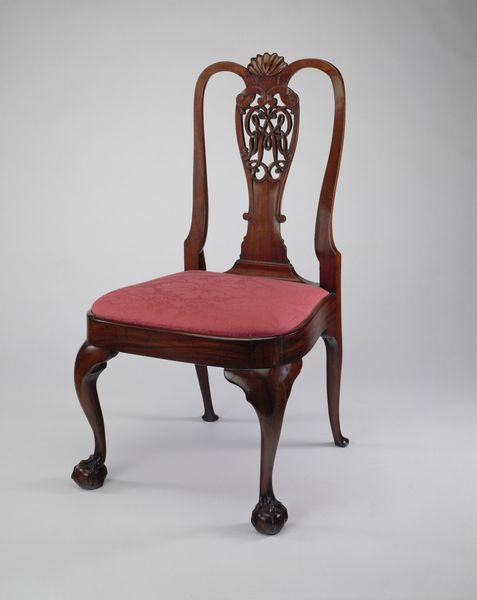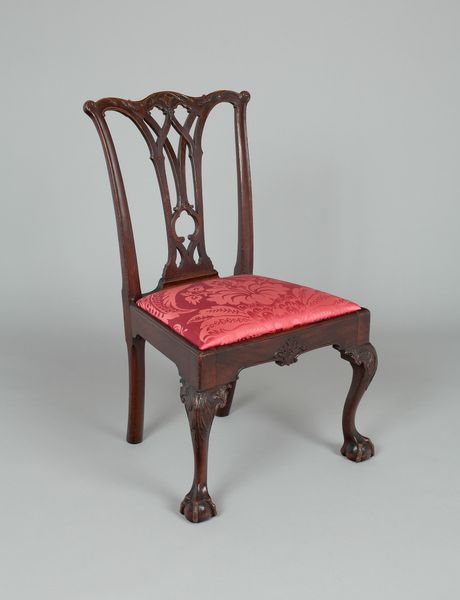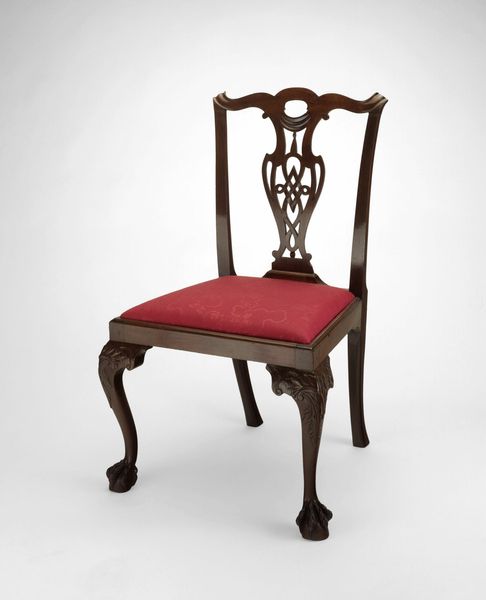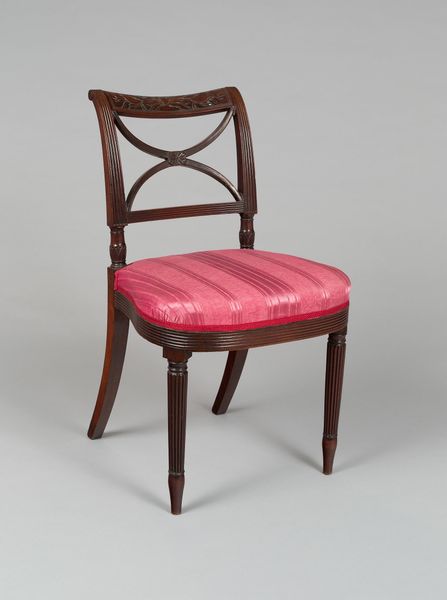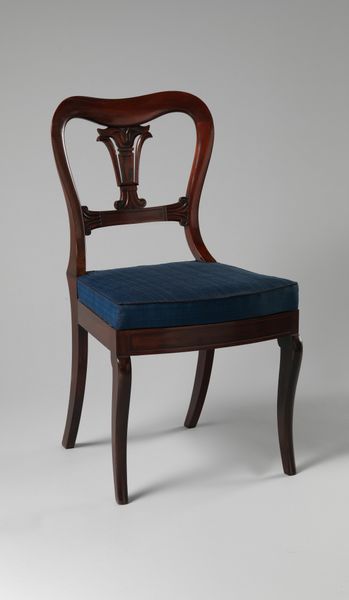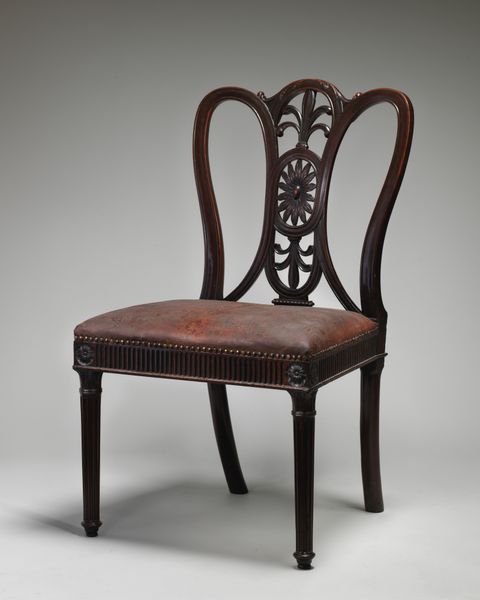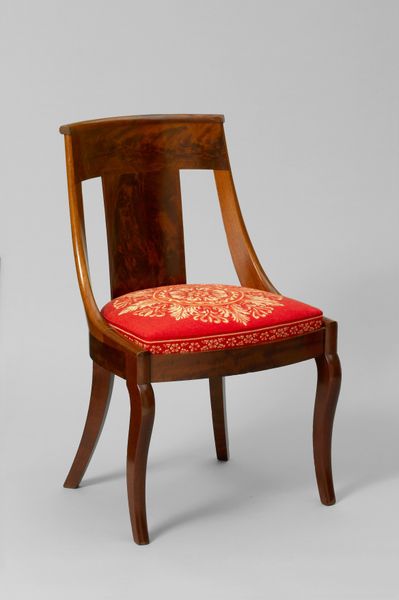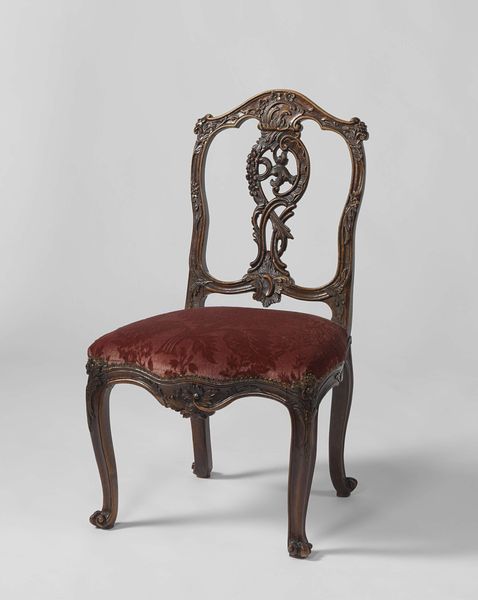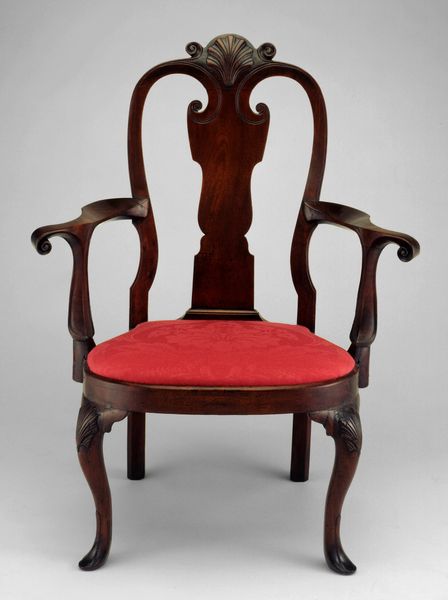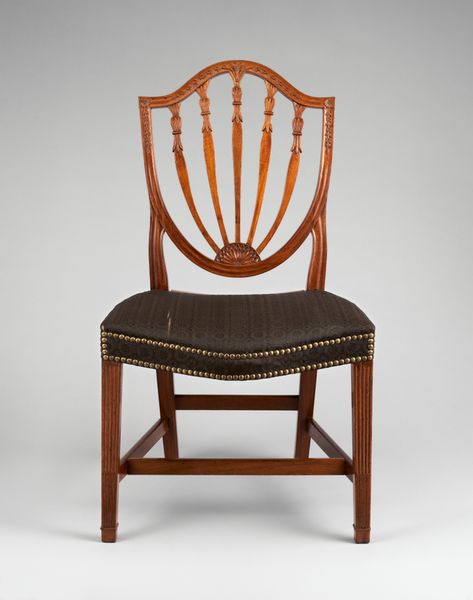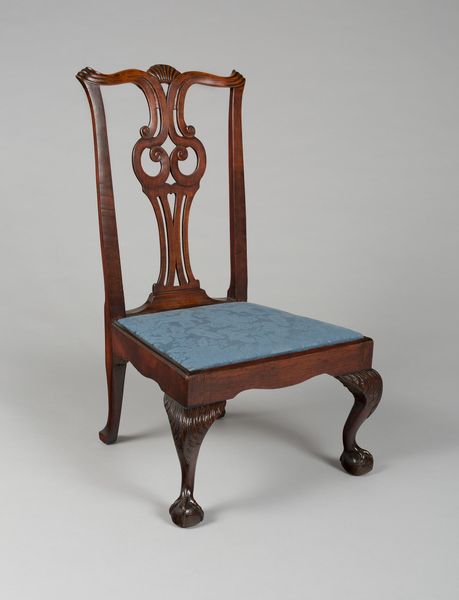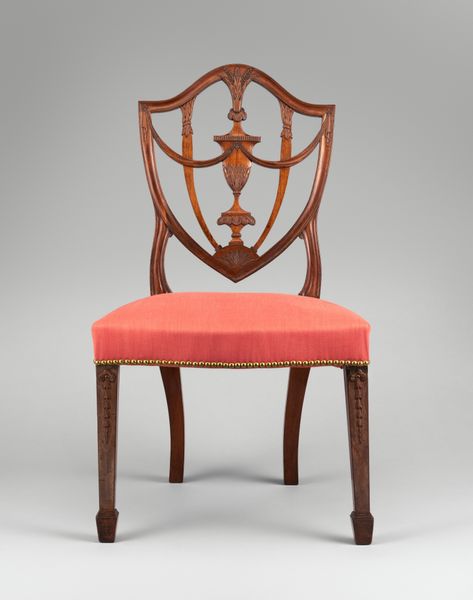
Side chair (one of a set of fourteen) 1767 - 1777
0:00
0:00
sculpture, wood
#
neoclassicism
#
furniture
#
sculpture
#
wood
#
decorative-art
Dimensions: Overall (each): 38 1/4 × 22 × 22 1/2 in. (97.2 × 55.9 × 57.2 cm)
Copyright: Public Domain
Curator: This elegant object is a side chair, one of a set of fourteen crafted between 1767 and 1777. It's currently held in the collection of the Metropolitan Museum of Art, and was fashioned by the renowned cabinetmaker Thomas Chippendale. The materials used include wood and what looks like leather upholstery. Editor: My first impression? Austere elegance. It has a sense of dignified restraint, yet that flash of almost cartoonish red upholstery gives it a playful touch. Like a bishop wearing funky socks. Curator: Precisely. This chair exemplifies the Neoclassical style popular at the time. The straight lines, the restrained ornamentation, and the overall symmetry all hark back to classical forms and ideals. It’s part of a broader trend where wealthy elites wanted to demonstrate their learned sensibilities. Editor: I see it as a visual manifesto for sitting. A throne, even, in its own right, reduced in scale and domestic intimacy. The geometry in the chair's back looks musical to me, like strings waiting to be strummed by someone's thoughts. Curator: Think about the social function. A set of fourteen indicates a space designed for receiving guests, displaying wealth and taste. Furniture like this was crucial to social rituals, signalling status and shaping interactions. Editor: You know, that deep mahogany feels incredibly tactile. It’s amazing how wood, so resolutely "earth," could be transformed into something so deliberately airy, almost reaching for the sky. It does feel strangely formal for casual relaxing, which also made me laugh for some reason! Curator: Indeed. The formality is key. It’s about controlling the visual environment to convey power and cultivation. Editor: Looking at it, I suddenly feel a curious empathy for its long history and how many bottoms must have been supported over the years, and hopefully it continues on. Curator: Ultimately, it serves as a really important reminder of how seemingly functional objects reflect deep-seated values and power dynamics in history. Editor: So true, it holds stories both obvious and not, and that is always something truly special to engage with in these pieces.
Comments
No comments
Be the first to comment and join the conversation on the ultimate creative platform.
